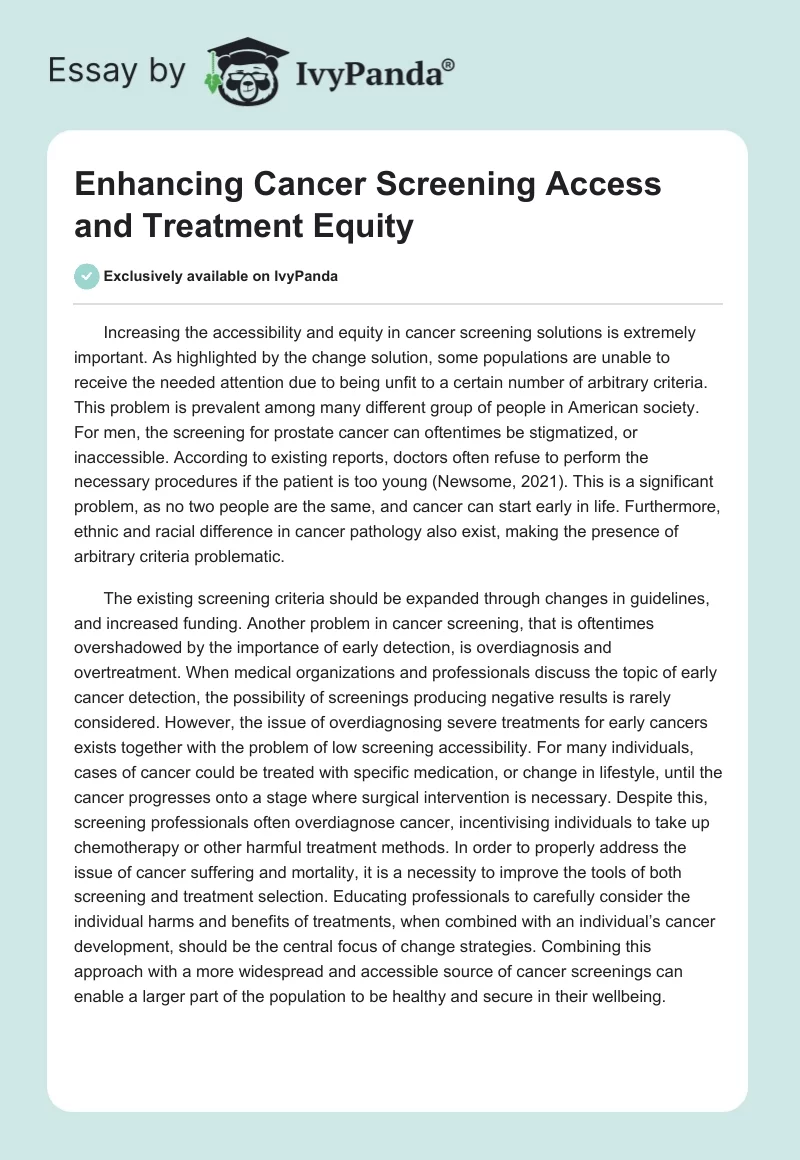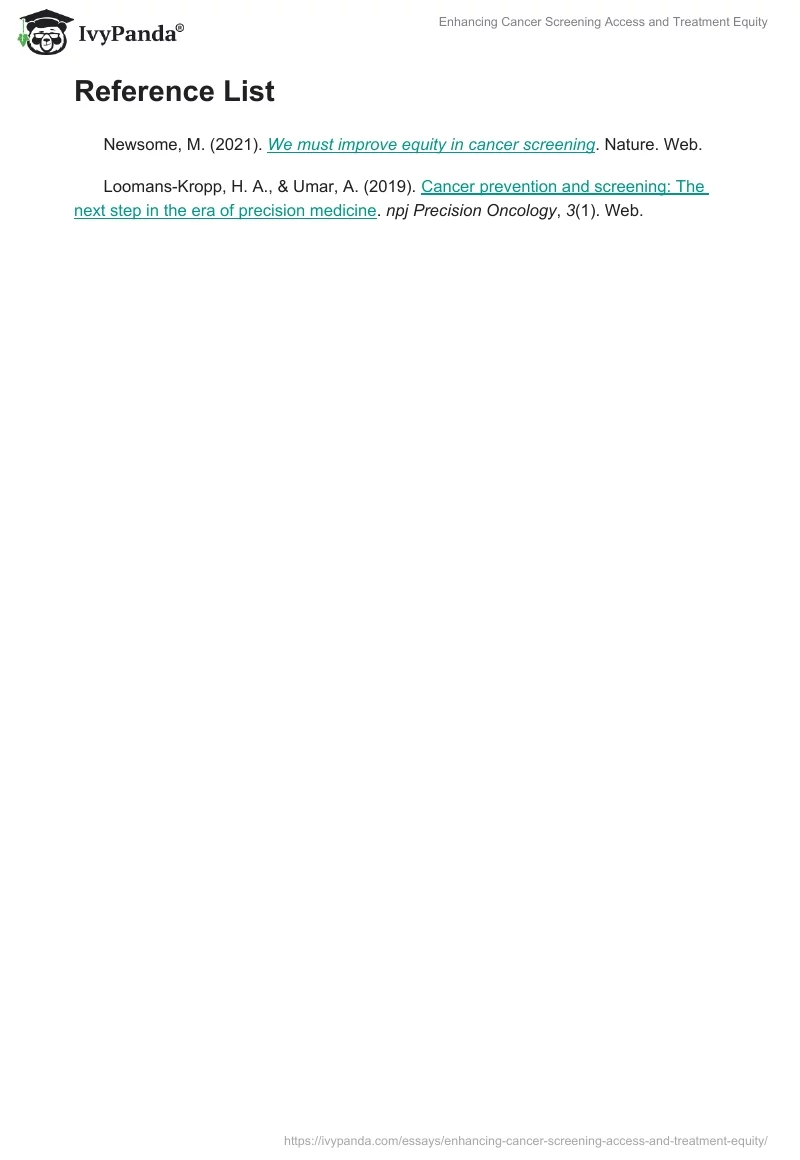Increasing the accessibility and equity in cancer screening solutions is extremely important. As highlighted by the change solution, some populations are unable to receive the needed attention due to being unfit to a certain number of arbitrary criteria. This problem is prevalent among many different group of people in American society. For men, the screening for prostate cancer can oftentimes be stigmatized, or inaccessible. According to existing reports, doctors often refuse to perform the necessary procedures if the patient is too young (Newsome, 2021). This is a significant problem, as no two people are the same, and cancer can start early in life. Furthermore, ethnic and racial difference in cancer pathology also exist, making the presence of arbitrary criteria problematic.
The existing screening criteria should be expanded through changes in guidelines, and increased funding. Another problem in cancer screening, that is oftentimes overshadowed by the importance of early detection, is overdiagnosis and overtreatment. When medical organizations and professionals discuss the topic of early cancer detection, the possibility of screenings producing negative results is rarely considered. However, the issue of overdiagnosing severe treatments for early cancers exists together with the problem of low screening accessibility. For many individuals, cases of cancer could be treated with specific medication, or change in lifestyle, until the cancer progresses onto a stage where surgical intervention is necessary. Despite this, screening professionals often overdiagnose cancer, incentivising individuals to take up chemotherapy or other harmful treatment methods. In order to properly address the issue of cancer suffering and mortality, it is a necessity to improve the tools of both screening and treatment selection. Educating professionals to carefully consider the individual harms and benefits of treatments, when combined with an individual’s cancer development, should be the central focus of change strategies. Combining this approach with a more widespread and accessible source of cancer screenings can enable a larger part of the population to be healthy and secure in their wellbeing.
Reference List
Newsome, M. (2021). We must improve equity in cancer screening. Nature. Web.
Loomans-Kropp, H. A., & Umar, A. (2019). Cancer prevention and screening: The next step in the era of precision medicine. npj Precision Oncology, 3(1). Web.


